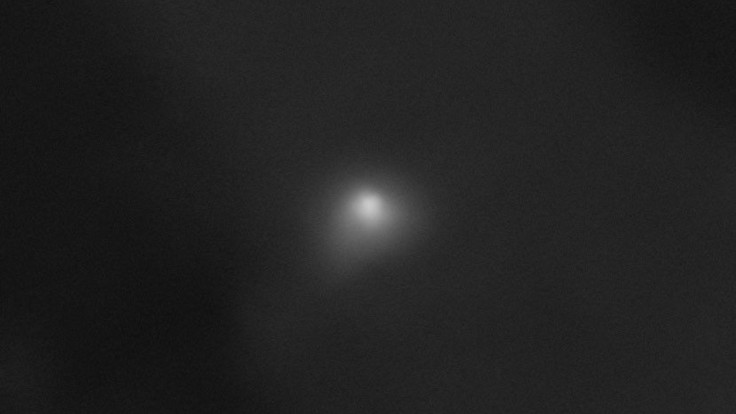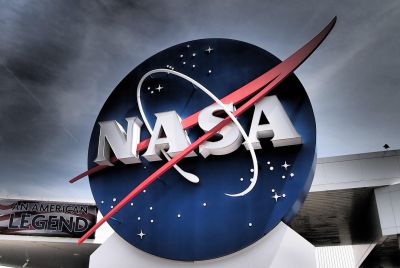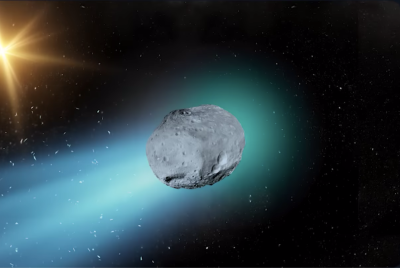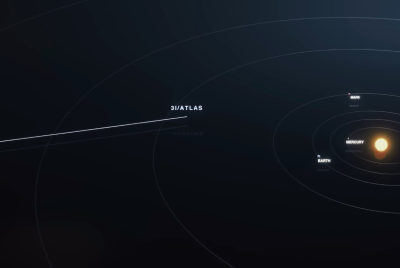3I/ATLAS Clearing Path of Meteors: NASA Photos Expose Potential Interstellar Tech Theory
Avi Loeb claims the 3I/ATLAS plume suggests alien path-clearing technology.

Scientists expected to have more clarity into 3I/ATLAS, when NASA finally released high-resolution images of the latest interstellar traveller to the Solar System. Instead, they encountered additional mystery. While the space agency celebrates the visual data, Harvard scientist Avi Loeb has identified a peculiar anomaly that defies standard cometary physics.
According to his analysis, the object might not just be a passive rock drifting through space, but rather an artificial craft utilising 'headlights' to sweep hazardous debris out of its way.
Avi Loeb Suspects Artificial 'Headlights' Are Clearing Hazards
The controversy centres on the direction of the object's plume. In standard celestial mechanics, a comet's tail trails behind it, pushed away by solar radiation. However, Loeb points out that the new images show a distinct glow emanating from the front.
He argues that this contradicts natural formation theories. If the streak pointed towards the Sun, it could be explained by sunlight hitting ice pockets; if it pointed away, it would be the result of solar wind.
'The extended glow is ahead of the object, not trailing it as expected for a cometary tail,' the astrophysicist told The Post. 'In the case of a technological object, it could be a beam of particles or light illuminating the path forward to avoid the hazards of micrometeorites.'
He noted that while the images were celebrated, they remained 'fuzzy', requiring him to analyse the data 'quantitatively to extract the most important information out of it'. The key issue remains the presence of a 'plume extended perpendicular to the direction of the Sun and ahead of the object', which makes natural explanations difficult to sustain.
Is Advanced Tech Using Magnetic Fields To Deflect Micrometeorites?
If this theory holds weight, the implications for the object's capabilities are staggering. Loeb proposes a sophisticated mechanism that would function like a cosmic shield for an interstellar vessel.
'Could this be a technological signature of illuminating or clearing the path from any hazardous micrometeorites that may cause damage to a technological object?' he asked.
When questioned on the mechanics of such a system, he suggested a method of charging obstacles to move them. 'It is possible to charge obstacles with a light beam and then deflect them with a magnetic field, for example,' Loeb stated. 'There might be more advanced technologies to accomplish this task.'
🚨 3I/ATLAS — HOLY SHIT!
— 3I/ATLAS WHISTLE BLOWER (@3IATLASEXPOSED) November 21, 2025
SpaceTracker dropped a 20-minute stacked composite and it’s NOT EVEN CLOSE to a normal comet.
A razor-sharp, perfectly symmetrical STAR-SHAPED core
A blazing plasma halo
ZERO tail. None. Gone.
THIS IS NOT A COMET #3IATLAS #3IATLASEXPOSED #SPACE… pic.twitter.com/TtRJgM4166
Sideways Jets Spark Speculation Of A Technological Mothership Releasing Probes
The intrigue deepened when Loeb scrutinised additional photographs taken by independent astronomers. These images revealed strange sideways lines creating an X-shaped pattern, extending nearly one million kilometres (620,000 miles) from the centre of 3I/ATLAS.
'The image shows two narrow jets directed opposite to each other and oriented vertically from the 3I/ATLAS-Sun axis,' he explained. While he admits the simplest explanation is a coincidental satellite streak, the alternative is far more provocative.
If these are not satellite artefacts, Loeb believes they could represent 'the trail of gas or dust associated with the linear path of small mini-objects that departed from 3I/ATLAS'. He posits these could be 'small probes that were released from a technological mothership'.
NASA Maintains Natural Origins While Telescopes Prepare For Deeper Analysis
Despite the Harvard professor's compelling theories, the official stance remains unchanged. During the unveiling at the Goddard Space Flight Centre, agency officials reiterated that all current evidence points to a natural origin.
'This object is a comet. It looks and behaves like a comet, and all evidence points to it being a comet,' declared NASA Associate Administrator Amit Kshatriya. 'But this one came from outside the solar system, which makes it fascinating, exciting and scientifically very important.'
The debate is set to intensify in the coming weeks. Loeb is waiting for data from large ground-based telescopes, as well as Hubble and Webb, to characterise the jets definitively. The fundamental question he poses in his report is whether these features are 'natural or technological in origin'.
© Copyright IBTimes 2025. All rights reserved.





















